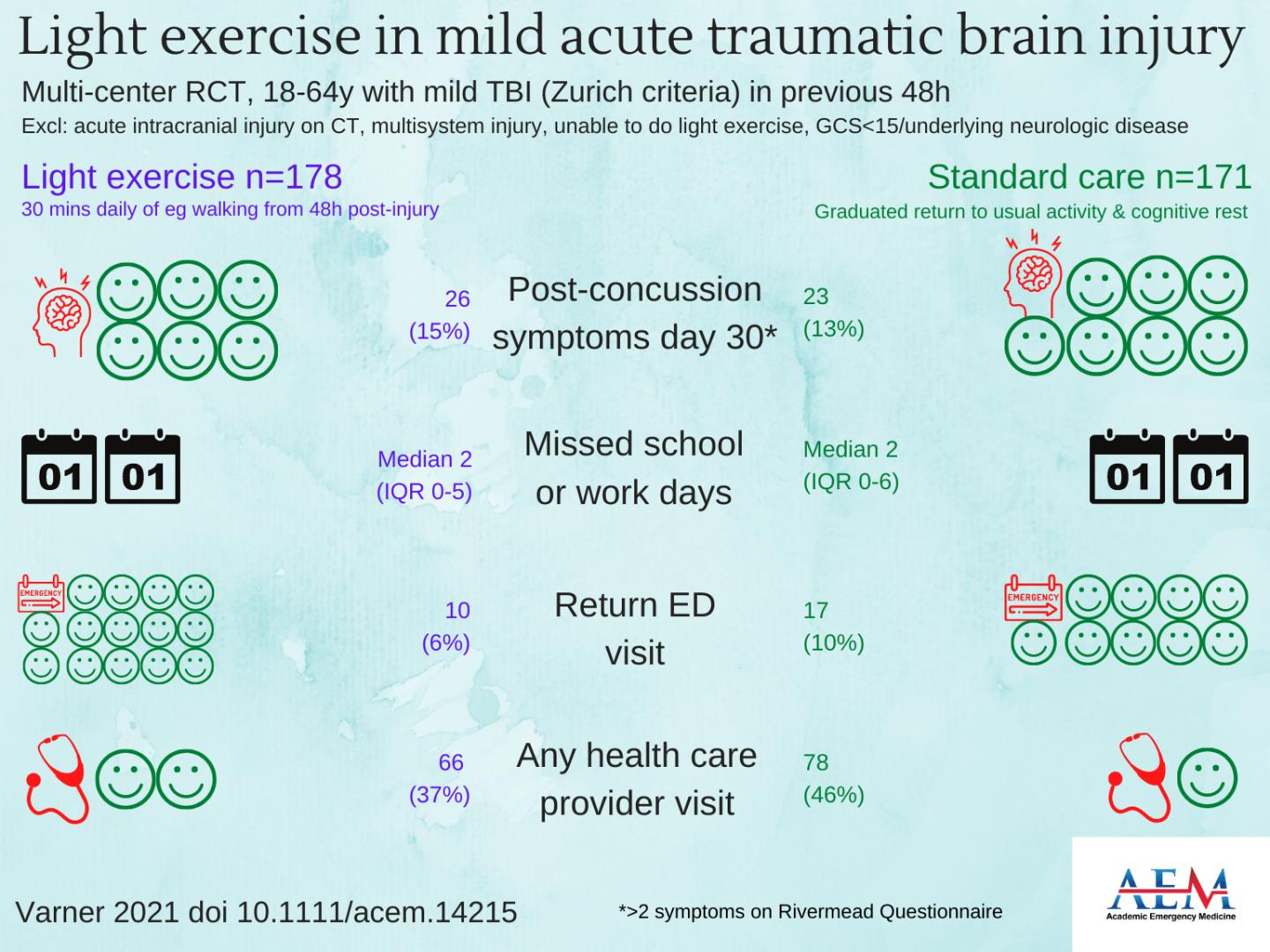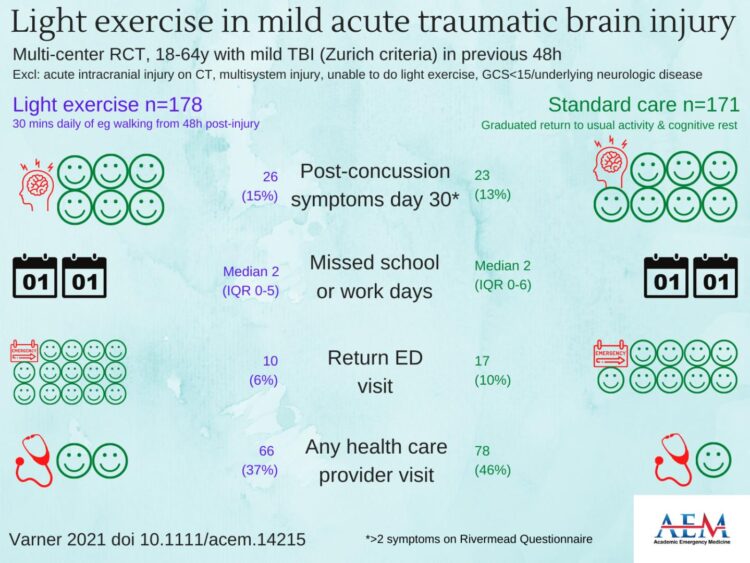
Credit: Kirsty Challen, B.SC., MBCHB, MRES, PH.D., Lancashire Teaching Hospitals, United Kingdom
Des Plaines, IL – For acute mild traumatic brain injury (mTBI), there were no differences in recovery or health care utilization outcomes with prescribed early light exercise compared to standard care. These are the results of a study titled A randomized trial comparing prescribed light exercise to standard management for emergency department patients with acute mild traumatic brain injury, to be published in the May issue of Academic Emergency Medicine (AEM) journal, a peer-reviewed journal of the Society for Academic Emergency Medicine (SAEM).
Findings of the study suggest that early light exercise may be encouraged as tolerated at emergency department discharge following mTBI, but this guidance is not sufficient to prevent persistent post-concussion symptoms (PCS) as it did not influence the development of PCS in adult diagnosed patients.
Current mTBI recommendations suggest a period of cognitive rest and gradual return to usual activities. Patients are encouraged to resume normal activities, including exercise, once symptoms have abated. However, a recent systematic review of early educational interventions in the emergency department (ED) for mTBI concluded there are no ED-based educational interventions or standard management practices that prevent PCS in this population. Additionally, previous research shows that a period of rest does not decrease severity or duration of mTBI symptoms.
###
The lead author of the AEM study is Catherine E. Varner, MD, MSc, of the Schwartz/Reisman Emergency Medicine Institute, Sinai Health System, and assistant professor in the department of family and community medicine at the University of Toronto in Toronto, Ontario, Canada.
The study details and results are discussed with Dr. Varner in a recent AEM podcast, Should Patients With a Concussion Be Told to Walk This Way.
ABOUT ACADEMIC EMERGENCY MEDICINE
Academic Emergency Medicine, the monthly journal of Society for Academic Emergency Medicine, features the best in peer-reviewed, cutting-edge original research relevant to the practice and investigation of emergency care. The above study is published open access and can be downloaded by following the DOI link: 10.1111/acem.14215. Journalists wishing to interview the authors may contact Tami Craig at [email protected].
ABOUT THE SOCIETY FOR ACADEMIC EMERGENCY MEDICINE
SAEM is a 501(c)(3) not-for-profit organization dedicated to the improvement of care of the acutely ill and injured patient by leading the advancement of academic emergency medicine through education and research, advocacy, and professional development. To learn more, visit saem.org.
Media Contact
Tami Craig
[email protected]
Related Journal Article
http://dx.





